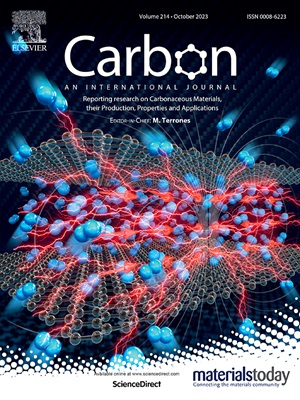Building a multi-performance wearable rubber-based strain sensor: for human motion capture, optical heating and underwater sensing
IF 10.5
2区 材料科学
Q1 CHEMISTRY, PHYSICAL
引用次数: 0
Abstract
Flexible and stretchable strain sensors have become the main candidates for wearable human devices in recent years. However, existing strain sensors often neglect the multi-performance development and the challenges in practical applications. In this study, based on the concept of environmental protection and multi-faceted material performance, the composite film was fabricated using water as the solvent, incorporating high elasticity of natural rubber latex (NR), multi-walled carbon nanotubes (MWCNTs), and silver nanowires (AgNWs). This rubber-based composite film was subsequently subjected to hydrophobic modification through the spraying of a mixed solution of polydimethylsiloxane (PDMS) and silicon dioxide (SiO2). Ultimately, a hydrophobic flexible NR/MWCNTs@AgNWs strain sensor was obtained, which exhibited high sensitivity (GF = 3.64), excellent linearity (R2 = 0.99), a broad monitoring range (0–200 %), rapid response capability (128 ms), and good durability (10,000 s cycles). More importantly, due to the photothermal conversion properties of MWCNTs and AgNWs, this hydrophobic flexible sensor is not only used for human motion monitoring and underwater sensing, but also has broad application prospects in optical heating in cold environments and thermal therapy for human joint diseases. This design has opened up a new path for the development of multifunctional wearable devices.

求助全文
约1分钟内获得全文
求助全文
来源期刊

Carbon
工程技术-材料科学:综合
CiteScore
20.80
自引率
7.30%
发文量
0
审稿时长
23 days
期刊介绍:
The journal Carbon is an international multidisciplinary forum for communicating scientific advances in the field of carbon materials. It reports new findings related to the formation, structure, properties, behaviors, and technological applications of carbons. Carbons are a broad class of ordered or disordered solid phases composed primarily of elemental carbon, including but not limited to carbon black, carbon fibers and filaments, carbon nanotubes, diamond and diamond-like carbon, fullerenes, glassy carbon, graphite, graphene, graphene-oxide, porous carbons, pyrolytic carbon, and other sp2 and non-sp2 hybridized carbon systems. Carbon is the companion title to the open access journal Carbon Trends. Relevant application areas for carbon materials include biology and medicine, catalysis, electronic, optoelectronic, spintronic, high-frequency, and photonic devices, energy storage and conversion systems, environmental applications and water treatment, smart materials and systems, and structural and thermal applications.
 求助内容:
求助内容: 应助结果提醒方式:
应助结果提醒方式:


